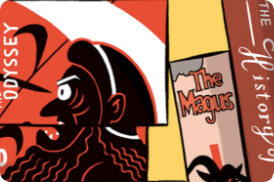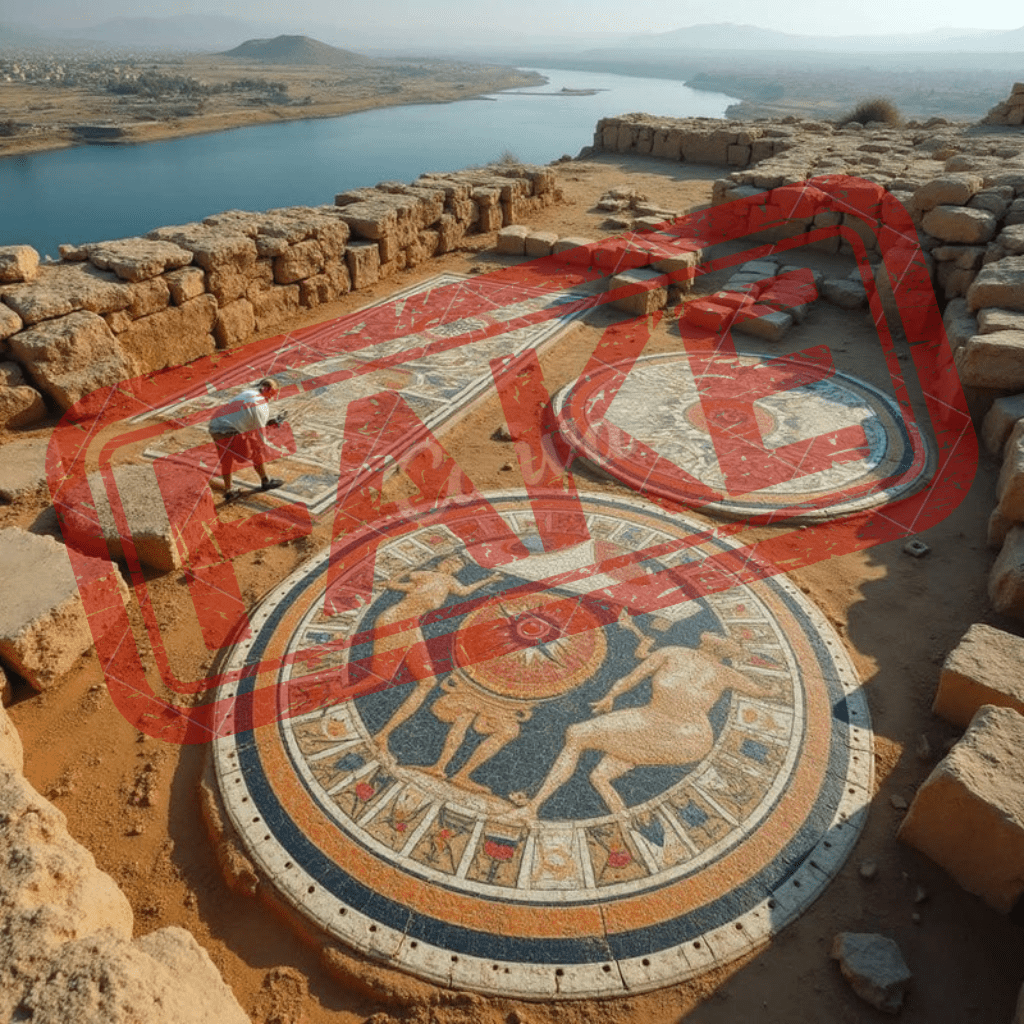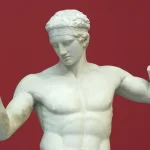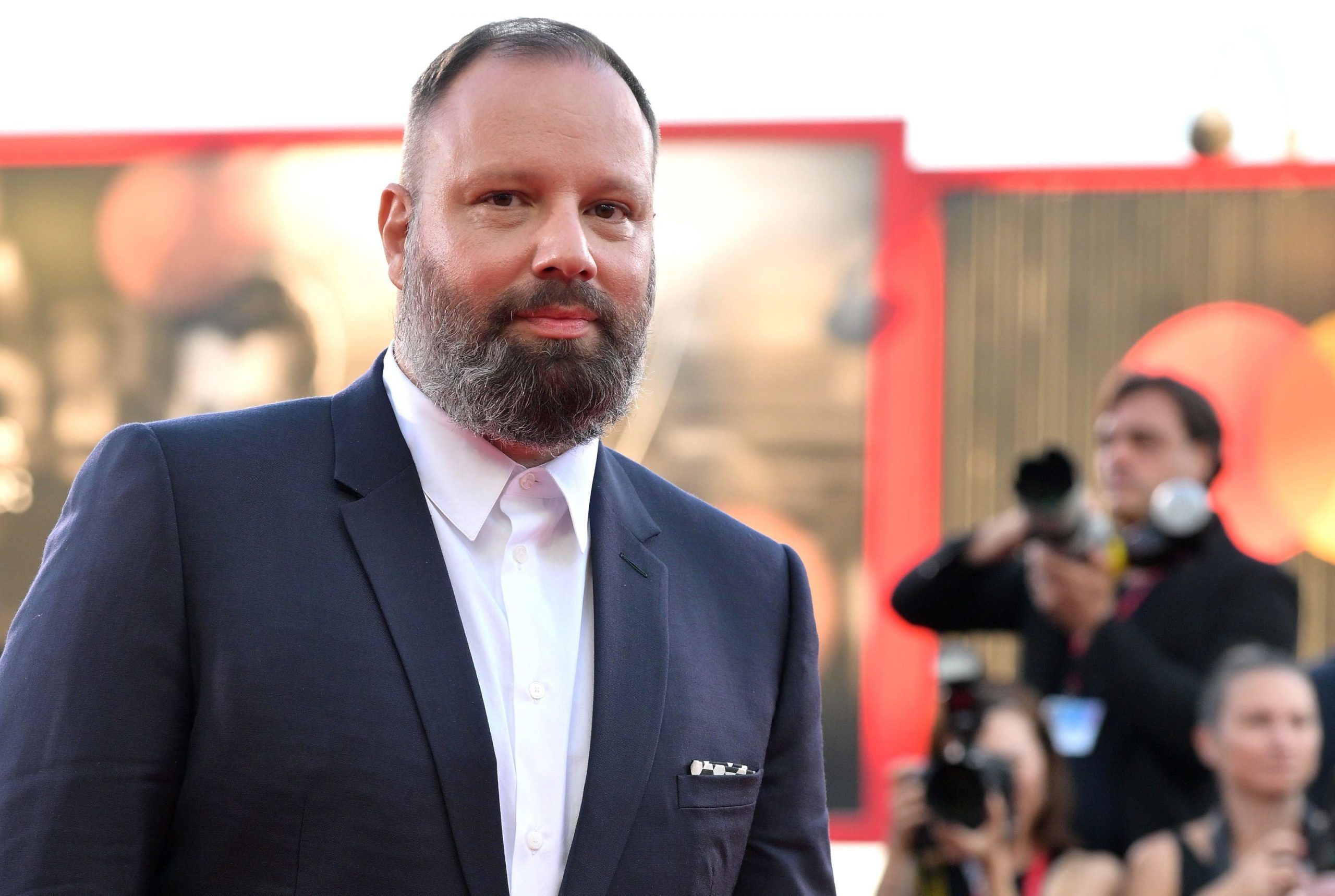A viral image claiming to show ancient Greek mosaics from the 2nd century B.C. discovered in Zeugma, Turkey, has been debunked as fake. The synthetic photograph, which circulated widely on social media in December 2024, was accompanied by the claim that archaeologist Professor Kutalmış Görkay of Ankara University led the archeological team that made the find.
However, AFP Fact Check, a department within the Agence France-Presse, contacted Görkay to ascertain the validity of the image. In an email to AFP, Görkay confirmed that he had not discovered the depicted mosaics, calling the information circulating on the internet as “fake news.”
Görkay further added that he thought the image was “AI-generated”, saying that “one can easily understand when one looks at carefully the mosaics and the architectural remains in style and scale wise.”
AFP also contacted the director of the Zeugma Mosaic Museum who confirmed that the depicted mosaics are not part of the museum’s collection.
Furthermore, independent archaeological experts contacted by AFP confirmed Görkay’s assessment that the photo does not depict ancient Greek mosaics.
“This photo is very bizarre,” noted Ruth Westgate, a Senior Lecturer in Ancient History and Archaeology at Cardiff University. “There’s no way that the mosaics are real – they look nothing like real Roman mosaics,” she is quoted as saying to AFP, explaining that although Zeugma was an ancient Greek city, the genuine mosaics found there today and for which the city is famous, are actually from Roman times.
“I cannot imagine anything that looked less like genuine ancient mosaics, of whatever date, than these three works,” said Katherine Dunbabin, Professor Emerita in Greek and Roman studies at McMaster University in Canada, adding that the image is an “absurd fabrication.”
AFP also sent the image to two AI experts for technical feedback on the picture itself. S. Subrahmanian, a Professor of Computer Science at McCormick School of Engineering at Northwestern University, analyzed the image using five deepfake detection algorithms. In his report to AFP, two models indicated the image as likely AI-generated, though the results were not definitive. However, in the same report sent by Subrahmanian, a human analyst noted the picture’s unrealistic features, such as distorted human figures and missing shadows—further indicating image manipulation.
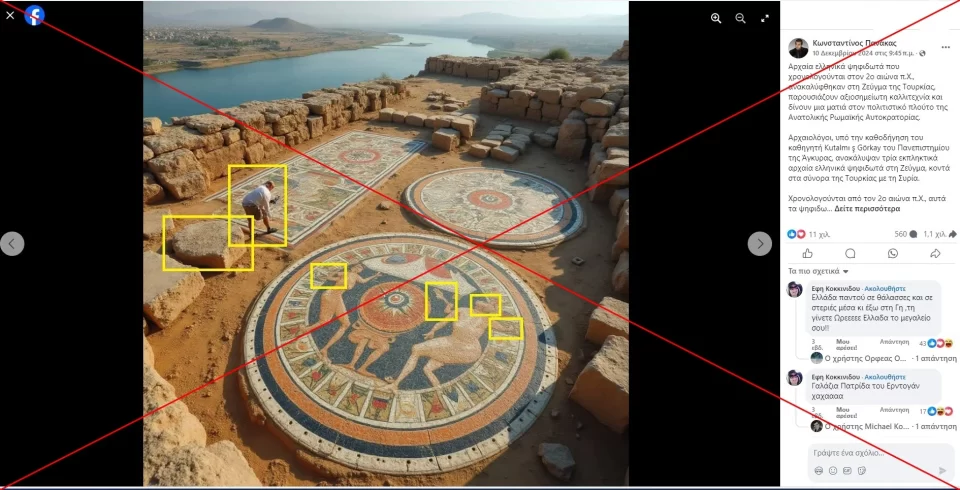
Olga Papadopoulou, research assistant at the Centre of Research & Technology Hellas, employed a “Synthetic Image Detection” tool to evaluate the image. The tool concluded with a 99.99% probability that the image was synthetic, supported by two additional models showing results of 68.28% and 68.87% likelihood of being AI-generated.
The false claim garnered significant attention online, amassing over 1,100 shares on Facebook and spreading to other platforms like X (formerly Twitter) and the web. As AI-generated content becomes more sophisticated, the fight against misinformation requires not just stronger tools for assessment, but an increased public awareness that safeguards historical and cultural knowledge worldwide.
Cover Photo Credit: AFP



